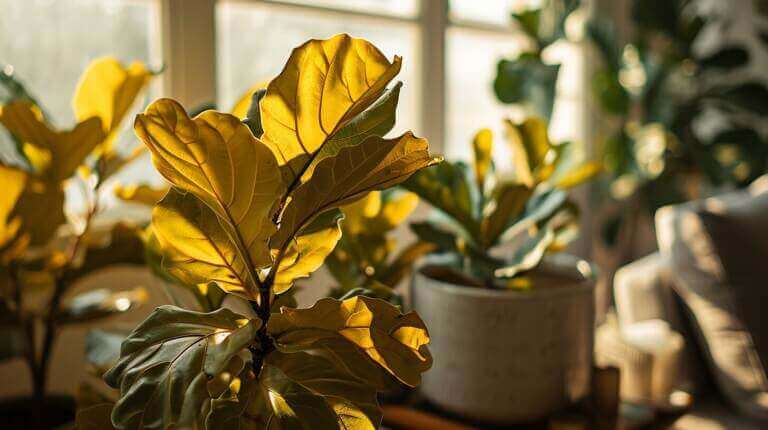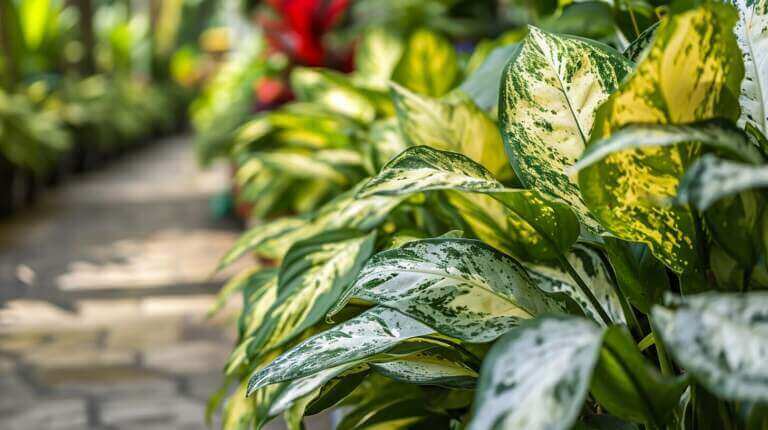Do Pothos Need Drainage Holes? Potting Tips for Healthy Pothos Plants
In the world of gardening, the success of a plant often lies in the details. And when it comes to the beloved pothos indoor plant, one question frequently arises: do pothos need drainage holes?
This seemingly minute decision can have a significant impact on the health and vitality of your pothos. In this article, we will explore the importance of drainage holes, provide tips for choosing the right potting soil, and discuss alternative potting methods to ensure your pothos thrives in its new home.
Key Takeaways
- Drainage holes are crucial for pothos plants to prevent waterlogged soil and promote healthy root growth.
- Self-watering pots with reservoirs and wicking systems can be used as an alternative to traditional pots with drainage holes, but the drainage system should be regularly checked to prevent root rot.
- Choosing the right potting soil is important for pothos plants, and a well-draining mixture with a blend of organic matter and inorganic materials is recommended.
- Proper watering techniques without drainage holes include using self-watering pots, monitoring the water level in the reservoir, and allowing the top inch of soil to dry out between waterings.
The Importance of Drainage Holes for Pothos Plants
While discussing the importance of drainage holes for Pothos plants, it is crucial to consider their role in preventing waterlogged soil and promoting healthy root growth. Drainage holes are essential for maintaining the right moisture level in the soil, as excessive water can lead to root rot and other detrimental conditions. These holes allow excess water to escape, preventing it from pooling at the bottom of the pot and suffocating the roots.
One alternative to traditional pots with drainage holes is the use of self-watering pots. These pots have a reservoir at the bottom that holds water, and a wicking system that allows the plant to absorb water as needed. The benefits of using self-watering pots include a reduced risk of overwatering, as the plant can take up water at its own pace, and a more consistent moisture level in the soil.
However, even with self-watering pots, it is essential to ensure proper drainage. Without drainage holes, excess water can still accumulate in the reservoir, leading to root rot. Therefore, it is important to regularly check the drainage system of self-watering pots and troubleshoot any issues that arise.
Choosing the Right Potting Soil for Pothos
When selecting potting soil for Pothos, it is important to consider the specific needs of the plant and choose a well-draining mixture that promotes healthy root development. Pothos plants, also known as Devil’s Ivy, thrive in soil that allows excess water to drain away, preventing root rot and other moisture-related issues. A well-draining potting mix consists of a blend of organic matter, such as peat moss or compost, and inorganic materials like perlite or vermiculite. This combination helps retain moisture while allowing excess water to pass through, ensuring the roots are neither too wet nor too dry.
In addition to choosing the right potting soil, it is also essential to understand the lighting requirements for Pothos. These plants prefer bright, indirect light but can tolerate lower light conditions. Placing them near a north or east-facing window is ideal, as it provides the right amount of light without direct sun exposure. If the light is too low, the plant may become leggy and lose its vibrant foliage. On the other hand, excessive sunlight can scorch the leaves.
To provide optimal nutrition for Pothos, choosing the right fertilizer is crucial. A balanced, water-soluble fertilizer with a ratio of 20-20-20 or 10-10-10 is recommended. This ensures a steady supply of essential nutrients like nitrogen, phosphorus, and potassium. It is best to fertilize Pothos every 2-4 weeks during the growing season, following the instructions on the fertilizer packaging. Over-fertilizing can lead to salt buildup and damage the roots, so it’s important to use fertilizers in moderation.
In conclusion, selecting the right potting soil, understanding the lighting requirements, and choosing the appropriate fertilizer are all essential factors in promoting the health and growth of Pothos plants. By providing the optimal conditions, Pothos owners can enjoy lush green foliage and thriving plants that add beauty and vitality to their indoor spaces.
| Key Points | Description |
|---|---|
| Potting Soil | Choose a well-draining mixture that promotes healthy root development |
| Lighting Requirements | Provide bright, indirect light, avoiding direct sunlight |
| Fertilizer | Use a balanced, water-soluble fertilizer with a ratio of 20-20-20 or 10-10-10, and fertilize every 2-4 weeks during the growing season |
| Maintenance Guidelines | Follow instructions on fertilizer packaging, avoid over-fertilizing, and provide moderate watering |
How to Properly Water Pothos Without Drainage Holes
Indeed, properly watering Pothos without drainage holes can be challenging, but by using a careful and measured approach, it is possible to maintain the plant’s health and prevent waterlogged soil.
One effective technique is to use self-watering pots, which have a built-in reservoir that allows the plant to draw water as needed. These pots provide a controlled watering environment, preventing overwatering while ensuring the plant receives adequate moisture.
To properly water Pothos in self-watering pots, start by filling the reservoir with water and allowing it to saturate the potting mix. Monitor the water level in the reservoir and refill as necessary. It is important to avoid overfilling the reservoir, as this can lead to waterlogging. Instead, aim for a moderate moisture level, allowing the top inch of soil to dry out between waterings. This will prevent the roots from sitting in water for extended periods.
By using self-watering pots and following these watering techniques, Pothos plants can thrive without drainage holes. However, it is crucial to be mindful of signs of overwatering, which include yellowing leaves, wilting, and root rot.
In the next section, we will explore these signs in detail and discuss methods to prevent overwatering, ensuring the health and longevity of your Pothos plant.
Signs of Overwatering and How to Prevent It
To prevent overwatering, it is important to be aware of the signs of overwatering, such as yellowing leaves and wilting, and take necessary steps to address the issue. Overwatering can lead to root rot, a condition where the roots of the plant become waterlogged and start to decay. This can ultimately lead to the death of the plant if not addressed promptly.
Here are some steps you can take to prevent root rot and adjust watering frequency:
- Check the soil moisture: Use your finger or a moisture meter to check the moisture level of the soil. If it feels damp or wet, hold off on watering until it dries out slightly.
- Adjust watering frequency: Instead of watering on a fixed schedule, water your plants only when the top inch or so of the soil feels dry. This will prevent overwatering and allow the roots to get enough oxygen.
- Ensure proper drainage: Make sure your pots have drainage holes to allow excess water to escape. If your pot doesn’t have drainage holes, consider repotting the plant into a container that does.
- Use well-draining soil: Plant your pothos in a well-draining potting mix that allows water to flow through easily. This will help prevent water from pooling around the roots and causing root rot.
Alternative Potting Methods for Pothos Plants
Although traditional potting methods are effective, exploring alternative potting methods for pothos plants can provide unique benefits and enhance plant growth. One popular alternative is using hanging pothos baskets, which not only serve as a decorative element but also create a favorable environment for the plants. These baskets allow the pothos to cascade down, mimicking their natural growth habit and creating an aesthetically pleasing display.
Another alternative potting method is using alternative potting materials such as sphagnum moss or coco coir instead of traditional potting soil. These materials retain moisture well and provide good aeration for the roots, promoting healthier growth. They also prevent excessive water retention, reducing the risk of overwatering.
To further enhance the growth of pothos plants, incorporating a balanced fertilizer into the potting mix is essential. This can be achieved by adding slow-release granules or using a liquid fertilizer during regular watering.
Table: Alternative Potting Methods for Pothos Plants
| Method | Benefits | Considerations |
|---|---|---|
| Hanging pothos baskets | Aesthetic appeal, mimics natural growth habit, creates a favorable environment | Requires proper support and regular watering |
| Alternative potting materials (e.g. moss, coir) | Moisture retention, good aeration, reduces risk of overwatering | Requires regular monitoring of moisture levels and additional fertilizer supplementation |
| Balanced fertilizer incorporation | Promotes healthier growth | Requires proper dosage and regular application |
Overall, exploring alternative potting methods for pothos plants can provide a unique and rewarding experience for plant enthusiasts. By considering alternative potting materials and using hanging pothos baskets, individuals can create a visually appealing display while enhancing the health and growth of their pothos plants.
FAQs – Pothos Need Drainage…
Will Following These Potting Tips Help Make My Pothos Fuller and Bushier?
Following these effective techniques for bushier pothos can definitely help make your plant fuller and more bushy. Ensuring the right sized pot with good drainage, using high-quality potting mix, and providing adequate sunlight or artificial light are key factors. Additionally, regular pruning, fertilizing, and misting can further promote healthy growth, making your Pothos thrive.
Can I Use a Pot Without Drainage Holes for My Pothos Plant?
Using a pot without drainage holes for your pothos plant is possible, but it comes with its own set of pros and cons.
The main alternative potting method involves using a layer of gravel or rocks at the bottom of the pot to create a drainage layer. While this can help prevent water from sitting at the bottom of the pot, it can also increase the risk of root rot if the excess water is not properly drained.
It is important to carefully monitor the moisture levels and watering frequency to ensure the plant’s health.
What Type of Potting Soil Is Best for Pothos Plants?
When choosing a potting mix for your pothos plants, it is important to select a well-draining soil that promotes healthy root growth.
The best potting mix for pothos plants is a combination of peat moss, perlite, and vermiculite, which allows for proper water drainage while retaining enough moisture for the plants to thrive.
Alternatively, you can also use a mixture of regular potting soil and sand to achieve similar results.
Avoid using heavy, clay-based soils as they can lead to waterlogged roots and potential root rot.
What Are the Signs of Overwatering in Pothos Plants?
Overwatering can be detrimental to the health of pothos plants. Signs of overwatering include yellowing or wilting leaves, root rot, and a musty odor.
To prevent overwatering, it is important to ensure proper drainage in the potting container. This can be achieved by using a pot with drainage holes or adding a layer of gravel or perlite at the bottom of the pot.
Additionally, allowing the soil to dry out between waterings and using a well-draining potting mix can help prevent overwatering.
Are There Any Alternative Methods of Potting Pothos Plants That Don’t Require Drainage Holes?
Alternative potting methods for pothos plants that don’t require drainage holes exist, but they may not be as effective as traditional methods. While drainage holes provide numerous benefits such as preventing waterlogged soil and promoting root health, some gardeners opt for alternative methods like using a layer of rocks or charcoal at the bottom of the pot to improve drainage.
However, these methods may not provide adequate drainage and can lead to waterlogged soil, which can negatively impact plant health.
Do Pothos plants need drainage holes?
Yes, Pothos plants need drainage holes in their pots to ensure good drainage.
Why do Pothos plants need good drainage?
Good drainage is important for Pothos plants because it helps prevent waterlogged soil, which can lead to root rot and other diseases.
Do Pothos Plants Need Drainage Holes to Prevent Cats from Ingesting Them?
Pothos Toxicity Guide: While it’s crucial to consider safety measures, Pothos plants do not necessarily need drainage holes to prevent cats from ingesting them. Although cats are generally attracted to greenery, Pothos plants are only mildly toxic to pets, causing mild stomach upset if consumed. Nonetheless, it’s still recommended to keep plants out of reach or opt for pet-friendly alternatives.
How much water do Pothos plants need?
Pothos plants require moderate waterings. It is important to wait until the top inch of soil is dry before watering again. Overwatering can be detrimental to the plant’s health.
How often should I water my Pothos plant?
Watering frequency for Pothos plants depends on various factors such as temperature, humidity, and size of the pot. As a general guideline, water your Pothos plant when the top inch of soil feels dry to the touch.







